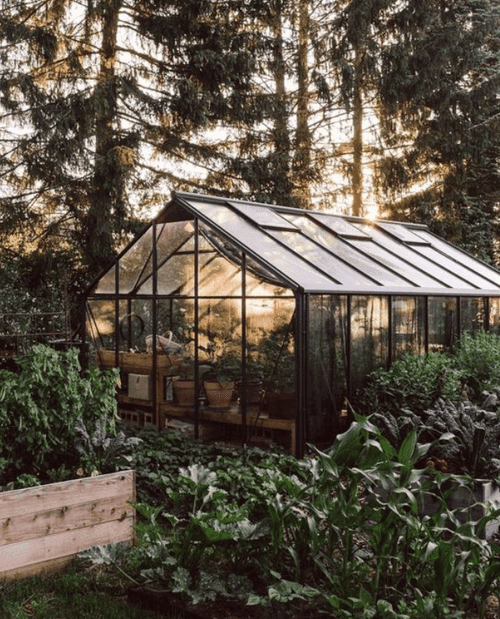Cultivating Quality: Monarch Greenhouse Construction Utah Finest
Wiki Article
The Future of Greenhouses: Technologies in Lasting Agriculture
Are you curious about the future of greenhouses and just how they are changing lasting agriculture? From advanced environment control systems to vertical farming strategies, water-efficient irrigation methods, eco-friendly energy combination, and smart information analytics, these improvements are changing the means we grow our food.Advanced Environment Control Equipment
To achieve ideal growing conditions, you can rely upon the innovations in greenhouses with sophisticated climate control systems. These systems have changed the way we cultivate plants, giving a controlled environment that is favorable to plant growth. With these cutting-edge systems, you can now manipulate temperature level, moisture, light degrees, and also carbon dioxide focus to create the best problems for your plants to flourish.One of the essential attributes of these sophisticated climate control systems is their capacity to regulate temperature level. By utilizing sensors and automated controls, the greenhouse can readjust the temperature level based on the details demands of the plants. This makes certain that they are never ever revealed to severe warm or cold, which can be damaging to their development.
Moisture control is an additional important element of these systems. By keeping the excellent moisture levels, you can stop concerns such as mold and mildew, mold, and disease from influencing your crops. These systems can additionally regulate the quantity of light that reaches the plants, making certain that they get the optimum quantity for photosynthesis.
Furthermore, progressed climate control systems can also control carbon dioxide concentrations. By boosting the levels of CO2 in the greenhouse, you can boost plant development and efficiency. This is particularly beneficial in areas with reduced natural carbon dioxide degrees.
Vertical Farming Methods
One important upright farming technique is utilizing piled expanding systems. Stacked expanding systems are generally utilized in urban areas where space is limited.One popular method is known as vertical hydroponics, where plants are expanded in nutrient-rich water without soil. This technique is highly reliable as it minimizes water usage by approximately 90% contrasted to conventional farming techniques. Additionally, given that the plants are grown inside, they are safeguarded from insects and conditions, reducing the need for chemicals.
One more method is aeroponics, which entails putting on hold the plant roots in a haze or air environment. This approach permits optimum nutrient absorption and oxygenation, leading to faster development and greater yields. Aeroponics additionally uses much less water than traditional farming and can be implemented in vertical systems, making it a popular choice for upright farming.
Water-efficient Watering Methods
Optimizing water conservation is necessary when it comes to carrying out water-efficient irrigation methods in sustainable agriculture. With global water scarcity coming to be a pressing concern, it is vital to create ingenious methods that optimize water usage in greenhouse procedures.One encouraging technique is drip irrigation, which delivers water directly to the plant origins, minimizing waste and evaporation. By utilizing a network of tubes with tiny emitters, water is used slowly and exactly, ensuring that plants get the essential moisture without excess drainage.
Another effective method is the use of dirt moisture sensing units. These devices determine the wetness content in the dirt and offer real-time data to farmers. By checking the soil's wetness degrees, farmers can precisely determine when and just how much water to use, stopping over-irrigation.
Moreover, the execution of rain harvesting systems is getting popularity in greenhouse agriculture. Accumulating rain from rooftops and saving it in tanks you could look here permits farmers to utilize this natural deposit for irrigation objectives, reducing reliance on typical water resources.
Lastly, the adoption of automated watering systems can considerably enhance water effectiveness. These systems make use of sensors to identify dirt moisture levels and climate problems, adjusting watering timetables as necessary. By enhancing water use based upon actual plant requirements, these systems can reduce water waste and promote sustainable farming practices.
Renewable Power Integration
Sustainable energy combination in greenhouses uses several advantages, including minimized operating expenses and lowered reliance on non-renewable power sources. The produced power can after that be made use of to run different procedures within the greenhouse, such as heating, lighting, and air flow systems. These wind turbines harness wind power and transform it right into power, which can be made use of to supplement the power requirements of the greenhouse.Smart Data Analytics and Automation
visit this pageTo boost the efficiency of your greenhouse operations and maximize resource application, take into consideration applying smart information analytics and automation. Smart information analytics involves gathering and analyzing data from numerous sensors and devices within your greenhouse.
This can consist of automating the control of illumination, air flow, watering systems, and nutrient shipment. By automating these processes, you can make certain that your plants receive the appropriate problems and nutrients at the ideal time, without the need for constant manual treatment.
In addition, smart information analytics and automation can work with each other synergistically. The data collected by sensors can be utilized to notify automatic systems, allowing them to make real-time changes based upon the existing problems. This combination of information analytics and automation can result in a lot more reliable and accurate resource allowance, ultimately causing higher returns and much better plant quality.
Final Thought
Finally, the future of greenhouses in sustainable agriculture looks appealing. With sophisticated environment control systems, upright farming strategies, water-efficient watering methods, and renewable energy assimilation, greenhouses are becoming a lot more ecologically pleasant and reliable. Furthermore, the use of clever data analytics and automation further enhances efficiency and decreases waste. These innovations are leading the way for a more sustainable and efficient agricultural sector, ensuring a greener and much get more healthier future for all.
By optimizing water use based on real plant requirements, these systems can decrease water waste and promote sustainable farming practices.
:max_bytes(150000):strip_icc()/SPR-HOME-6-best-greenhouses-4157678-01-08afeecb96714335891b91534228fd26.jpg)
Report this wiki page